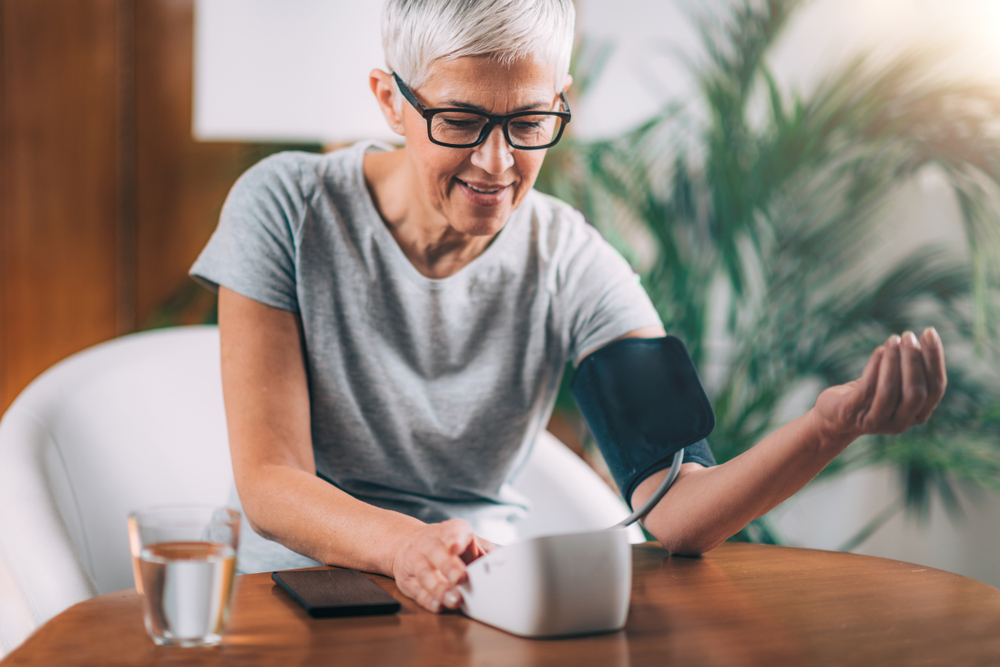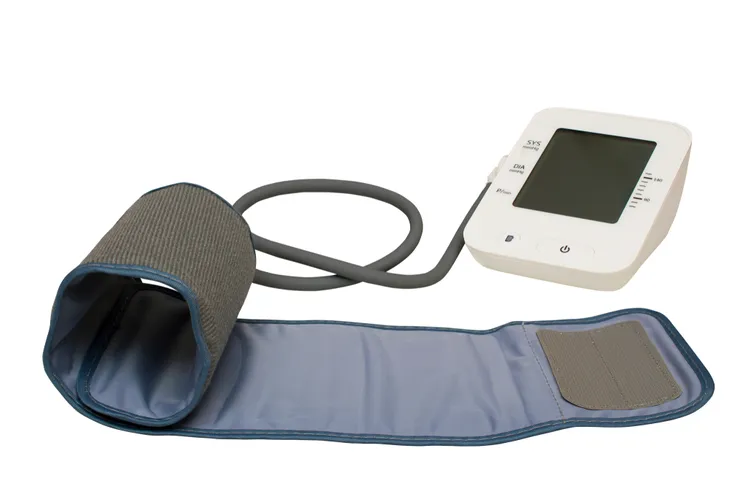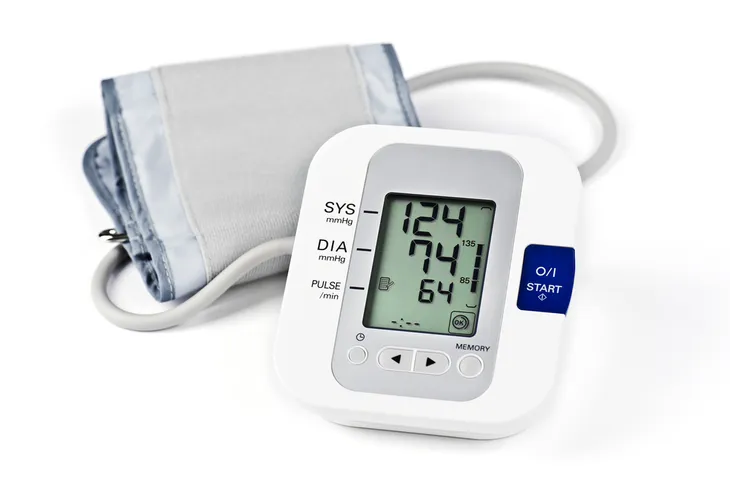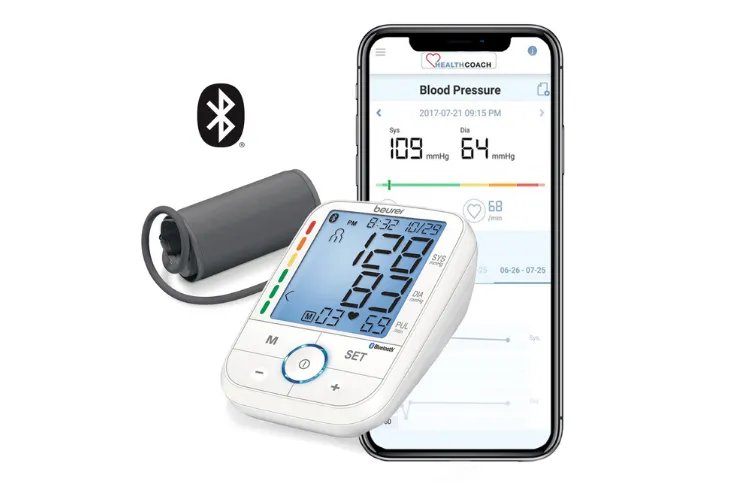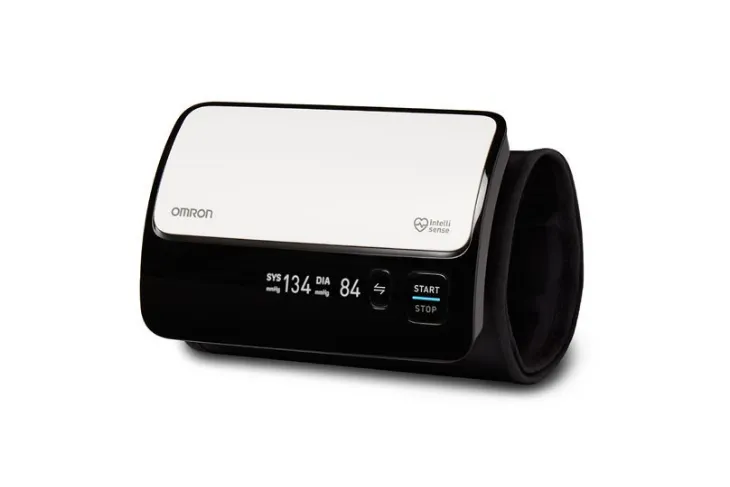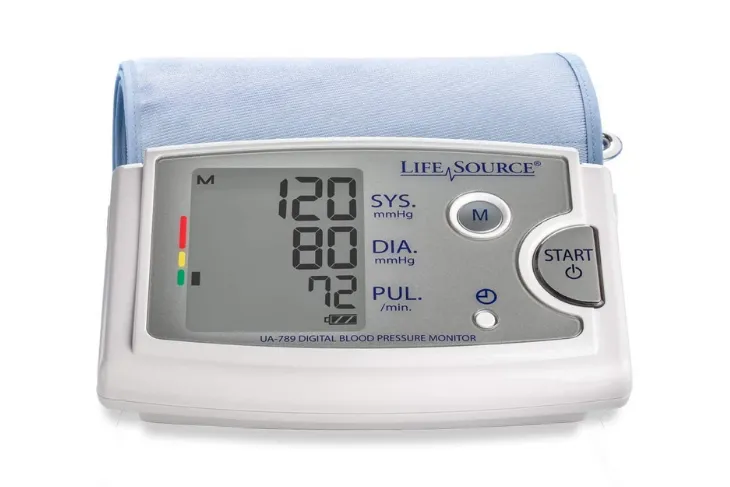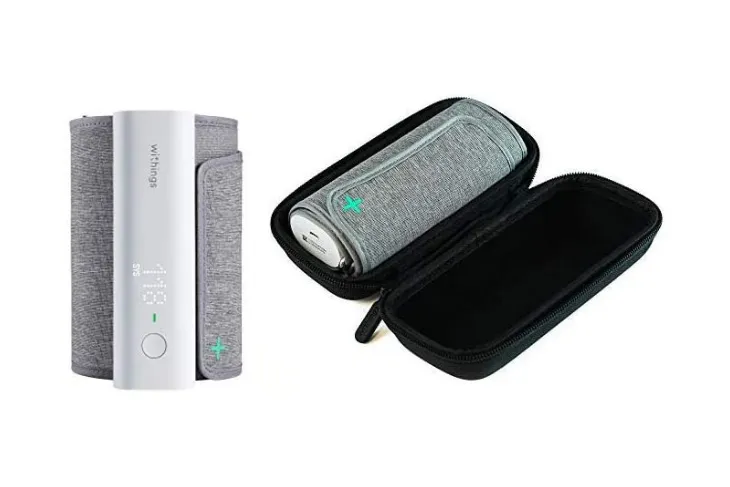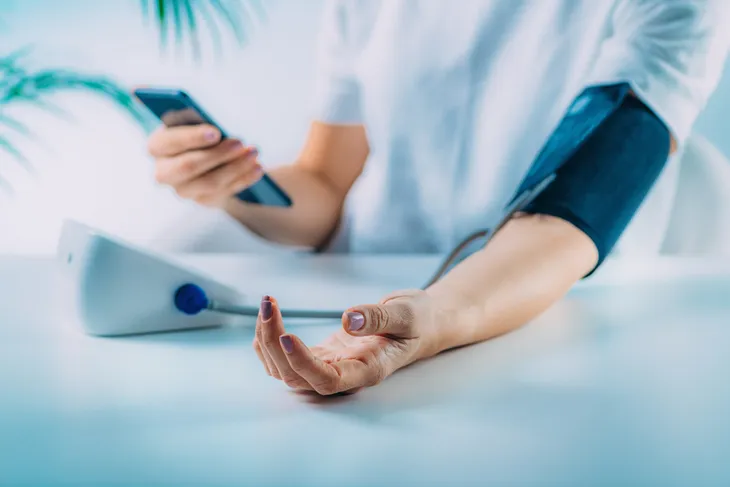Blood Pressure Monitors are great tools that can help you measure and track your blood pressure. If you have high blood pressure or elevated blood pressure, your doctor might recommend that you start checking it regularly at home. Even if this isn’t a concern for you, monitoring your blood pressure closely is a great way to stay proactive with your health.
Taking a blood pressure reading at home can be effortless too! All you need is an easy-to-use and easy-to-read monitor. Thankfully there are plenty of them on the market. So which blood pressure monitor is right for you? We explore the different types of at-home blood pressure monitors, and the features you should consider when choosing one. As a bonus, we’ve also included a few options you should consider!
Types of at-Home Blood Pressure Monitors
You can buy blood pressure monitors at most pharmacies, medical supply stores, and online. There are two types of monitors you can choose from. These are aneroid monitors or digital monitors.
An aneroid monitor is a manual blood pressure monitor that has a cuff that goes around your upper arm and you squeeze a rubber bulb to inflate it by hand. Digital monitors may be easier to use as they inflate automatically.
The best way to ensure you have the right monitor for you is to discuss your choices with your doctor. They’ll be able to recommend the best monitor for your situation. They’ll also be able to help ensure the monitor fits your arm properly and provides accurate readings.
Features To Consider When Choosing a Monitor
When choosing the right monitor for you there are a few features you should consider. For starters, you’ll want to check the cuff size. A properly fitting cuff is essential for accurate blood pressure readings. If you’re not sure what cuff size you need, ask your doctor.
Next, you’ll also want to make sure the display on the monitor is clear and easy to read. Finally, evaluate the cost. There are plenty of monitors on the market that can fit your budget. You may even have coverage with your health insurance. Next, let’s take a look at some of the top blood pressure monitors.
Best Overall Blood Pressure Monitor
Forbes rated the Beurer Smart Upper Arm Blood Pressure Monitor as best overall. This monitor features an easy-to-read display. It can even detect irregular heart rhythms and will notify you when it happens.
Further, the monitor also has Bluetooth capabilities and does more than measure your blood pressure. It also records your blood pressure and can sync the data to the free Beurer HealthCoach app.
Best Blood Pressure Monitor for Multiple Users
The Omron Evolv Bluetooth Blood Pressure Monitor is another great option, especially if multiple people in your house can use it. This monitor enables unlimited readings for an unlimited number of people.
You’ll also enjoy that this monitor is wireless and can sync the data to the OMRON Connect app using your mobile device. Finally, the monitor features a compact design making it easy to take with you wherever you go!
Best Blood Pressure Monitor for Large Arms
Finding a blood pressure monitor that fits properly can be tricky. If you have large arms this might be the perfect monitor for you! The LifeSource Upper Arm Blood Pressure Monitor features an extra-large cuff that fits 16.5-inches to 23.6-inches. The monitor also features simple buttons and an easy-to-read display.
Best Blood Pressure Monitor for On-the-Go
The Withings BPM Connect Blood Pressure Monitor is rated the best portable blood pressure monitor. This monitor comes with a premium protective case that is easy to slip inside your handbag or suitcase. The monitor is also easy to use and read and is wireless. It also has a rechargeable battery that can last up to six months of use with one charge.
How To Check Your Blood Pressure With an Aneroid Monitor
To use an aneroid monitor, start by putting the stethoscope earpieces in your ears. Next, place the stethoscope disk on the inside of your elbow and inflate the cuff by squeezing the rubber bulb. Inflate until the dial reaches 30 to 40 points higher than your last systolic (the top number of blood pressure) reading.
Loosen the valve slowly to let some air out of the cuff (about 2 to 3 millimeters per second). As you let the air out, you’ll hear your heartbeat. Check the dial for your blood pressure reading. This number will be the systolic pressure.
Continue to deflate the cuff and once you hear your heartbeat stop, the number on the dial will indicate your diastolic pressure. Finally, record the measurement by writing the systolic pressure first and then the diastolic number second. For example, it may look like 120/80.
How To Check Your Blood Pressure With a Digital Monitor
While aneroid monitors are certainly cheaper, they do require more work to get an accurate reading. This is why most people choose to have a digital monitor at home. To use a digital monitor, turn the power on. Put the cuff in place and push the start button to inflate the cuff.
After the cuff inflates, the monitor will automatically slowly release the air out. Then check the display to get your blood pressure reading. Digital monitors also come with manuals. We recommend reading your manual first before using it to ensure proper usage of the unit.
Tips for Accurate Use
It’s important to get an accurate reading and there are a few tips you can follow to help. For starters, before checking your blood pressure make sure you wait for at least 30-minutes after eating or drinking caffeine or alcohol. You should also empty your bladder first and rest for up to 5-minutes without talking before checking your blood pressure.
Further, for an accurate reading, sit in a comfortable position with your legs uncrossed. Elevate your arm to the level of your heart by placing it on a table, with your palm facing upwards. The cuff should be wrapped around a bare arm, not over clothing. Finally, the cuff should be snug but with enough room to place one finger under the cuff.
Another way to ensure your monitor is accurate is to take a second reading. Wait up to three minutes after the first reading and then take another to check its accuracy. You can also have your doctor check your monitor for accuracy.
The Benefits of Checking Your Blood Pressure at Home
What are the benefits of checking your blood pressure at home anyway? For starters, self-monitoring can help with early diagnosis. Monitoring at home is even more important if you have elevated blood pressure or another condition that may contribute to high blood pressure like diabetes and kidney disease.
Home monitoring can also help track your treatment plan and determine if the changes you are making are working. It may also help decrease the number of visits you need to see your doctor which in turn, can help cut down on health care costs.
Do you know what a healthy blood pressure reading is? Learn more about what your blood pressure should be at every age!
Activebeat.com is a participant in the Amazon Services LLC Associates Program, an affiliate advertising program designed to provide a means for sites to earn advertising fees by advertising and linking to Activebeat.com
